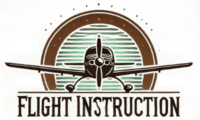Flying is one of the greatest freedoms, but with that freedom comes the responsibility to stay prepared for the unexpected. This is where Emergency Maneuver Training (EMT) comes in. Offered by CP Aviation in Santa Paula, California, this specialized training equips pilots with the skills and confidence to handle in-flight emergencies, prevent loss of control, and recover from unexpected situations effectively.
Why EMT Matters for Every Pilot
No matter how skilled or experienced a pilot may be, unexpected situations can arise. From aerodynamic stalls to spatial disorientation or even turbulence-induced upsets, emergencies can happen in any aircraft and at any time. EMT focuses on:
• Upset Prevention and Recovery Training (UPRT): Teaching pilots to recognize and prevent conditions that could lead to an upset.
• Practical Aerobatics: Building confidence in handling unusual attitudes and flight dynamics.
• Emergency Scenarios: Simulating real-world situations to prepare pilots for the unexpected.
According to FAA safety statistics, loss of control in flight is a leading cause of fatal accidents in general aviation. EMT directly addresses these risks, making it an essential part of every pilot’s training toolkit.
Training at CP Aviation: Why It Stands Out
Located at Santa Paula Airport (KSZP), CP Aviation is renowned for its EMT program. Combining highly experienced instructors, a structured curriculum, and a focus on safety, the program ensures that pilots leave feeling more confident and capable in their abilities.
One of the standout features of the program is its emphasis on practical training. Pilots practice scenarios in a real aircraft, gaining hands-on experience in upset prevention and recovery techniques. This is not just theoretical knowledge – it’s training that could save lives.
The Value of Training with Mark King
When it comes to aviation instruction, the quality of the instructor makes all the difference. Mark King, one of CP Aviation’s top instructors, is a seasoned professional with extensive aerobatic and emergency training experience.
Roman Lewicki, Certified Flight Instructor-Instrument (CFI-I), trained directly with Mark and describes the experience as a game-changer:
Training with Mark King is an invaluable experience for any pilot. His deep expertise, and ability to explain complex maneuvers make you feel confident and safe. After working with Mark, I walked away with not just skills, but also a renewed trust in my abilities as a pilot.
Mark’s focus on personalized instruction ensures that every pilot, regardless of experience level, leaves the program better prepared to handle emergencies.
Who Should Take EMT?
EMT is not just for new pilots – it’s for everyone in aviation, including:
• General Aviation Pilots: Stay prepared for unexpected situations in your aircraft.
• Aircraft Owners: Protect your investment and ensure safety for every flight.
• Certified Flight Instructors (CFI): Gain advanced skills to pass on to your students.
The program is particularly beneficial for pilots flying complex or high-performance aircraft, where handling an upset requires a more nuanced skill set.
Benefits of EMT Training
Pilots who complete EMT training report several key benefits:
1.Enhanced Confidence: Knowing you’re prepared for emergencies boosts your overall comfort in the cockpit.
2.Improved Skills: Mastering upset recovery techniques can make you a better and safer pilot.
3.Proactive Risk Management: Understanding and preventing upsets reduces the likelihood of accidents.
4.Career Advancement: For CFIs and commercial pilots, EMT adds a valuable layer of expertise to your resume.
Final Thoughts
Emergency Maneuver Training is more than just a course – it’s an investment in your safety and confidence as a pilot. Pilots who train with experts like Mark King at CP Aviation leave not only with new skills but also with a deeper understanding of how to manage risks and stay in control during every flight.
Whether you’re a seasoned aviator or just starting your journey, EMT is a must-have experience. Take the next step in your aviation journey – and remember, preparedness is the key to safe and enjoyable flying.


